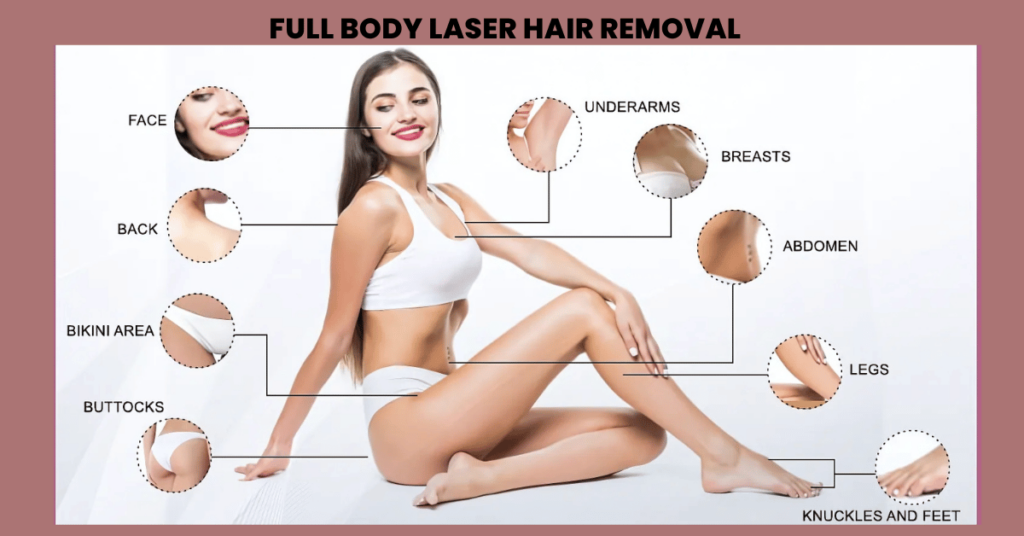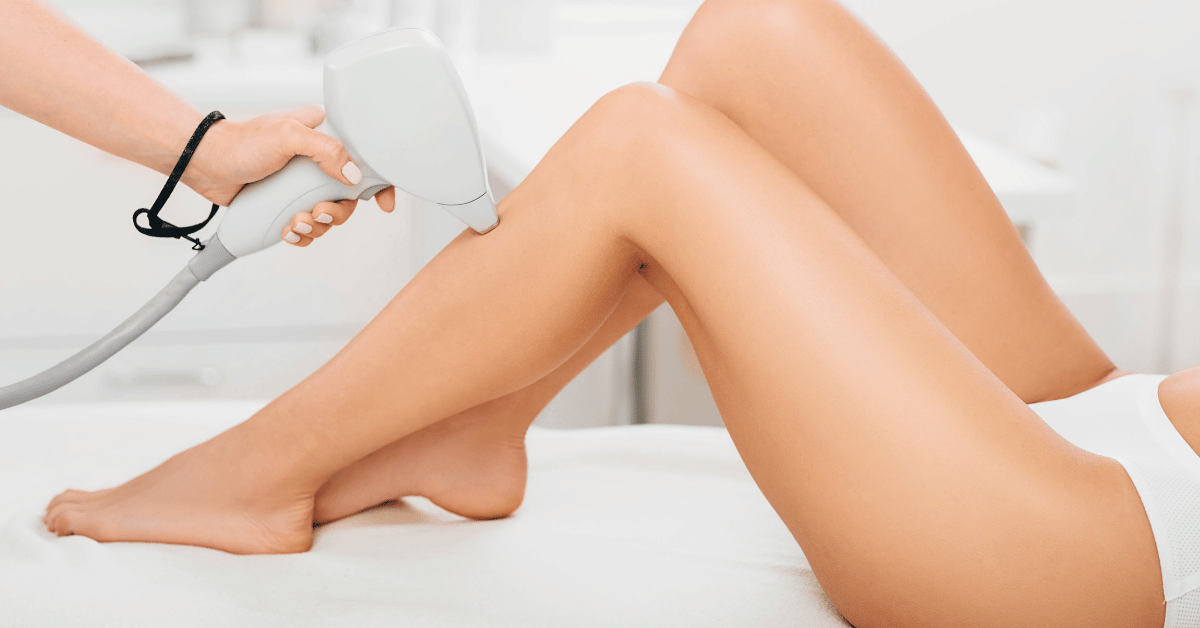Say goodbye to razors, waxing strips, and painful tweezing — 2025 has ushered in a new era of hair removal that’s efficient, long-lasting, and surprisingly comfortable. Full body laser hair removal is no longer a luxury reserved for a few; it has become a preferred choice for both men and women who crave smooth, hair-free skin all year round.

This blog explores why this treatment is trending, the latest advancements in technology, how many sessions you really need, safety for sensitive areas, cost comparisons, and more. Whether you’re considering your first session or just curious, this guide will provide clarity.
Why Full Body Laser Hair Removal is Trending in 2025
1. Time-Saving and Hassle-Free
Traditional methods like shaving or waxing are time-consuming and need regular maintenance. Laser hair removal offers a permanent reduction in hair growth, saving hours spent in front of mirrors or salon visits.

2. Long-Term Cost Efficiency
Although laser treatments may seem costly upfront, over time, they’re significantly more economical. No more buying razors, waxing kits, or paying for salon appointments every few weeks. You invest once and enjoy smooth skin for years.
3. Growing Popularity Among Men and Women
Once seen as a mostly female treatment, 2025 has seen a sharp rise in male clients opting for laser hair removal — from chest and back to full body grooming. With evolving beauty standards and increased focus on hygiene and aesthetics, this trend is only growing stronger.
What’s New in Laser Technology?
1. Pain-Free, High-Speed Lasers
Modern machines like the Diode and Alexandrite lasers offer virtually painless sessions. Most patients describe the feeling as a mild warmth or a rubber-band snap. Thanks to cooling technology, the experience is more comfortable than ever.
2. Shorter Sessions, Better Coverage
New devices treat larger areas faster — a full-body session that used to take hours can now be completed in 90 minutes or less. This means less time in the clinic and more time enjoying the results.
3. Inclusive for All Skin Types
Advancements in laser technology have made it safe and effective for all skin tones. Whether you have fair, wheatish, or dark skin, the latest machines adjust energy levels to suit your unique complexion, minimizing risks and maximizing results.
Cost Breakdown: Full Body vs. Individual Areas
Opting for full body laser hair removal is usually more cost-effective than treating each area separately. Here’s a rough estimate in 2025:
| Treatment Area | Estimated Cost per Session (INR) |
| Upper Lip | ₹1,500 – ₹2,000 |
| Underarms | ₹2,000 – ₹3,000 |
| Bikini Line | ₹3,500 – ₹5,000 |
| Full Arms & Legs | ₹10,000 – ₹15,000 |
| Full Body | ₹25,000 – ₹35,000 |
Most clinics offer discounted packages for full body treatments, especially when booked in multiple sessions.
How Many Sessions Are Needed?
Hair grows in cycles, and laser works best during the active growth phase. On average, 6 to 8 sessions spaced 4 to 6 weeks apart are recommended for noticeable, long-term results. Maintenance sessions every 6–12 months may be advised depending on individual hair regrowth.
Pre- and Post-Treatment Care Tips
Before Treatment:
- Avoid waxing, threading, or plucking for 4 weeks before your session.
- Shave the area 24 hours prior.
- Avoid sun exposure and tanning beds.
After Treatment:
- Apply a soothing aloe vera gel or prescribed ointment.
- Avoid hot showers, steam, and workouts for 24–48 hours.
- Use sunscreen on treated areas exposed to the sun.
Is It Safe for Sensitive Areas?
Yes, laser hair removal is safe for delicate zones like the bikini line and underarms when performed by a trained professional. These areas are more sensitive, so practitioners use lower intensity settings and cooling techniques to ensure safety and comfort.

Myths vs. Facts in 2025
Myth: Laser hair removal is painful.
Fact: Modern lasers are virtually pain-free thanks to built-in cooling.
Myth: It doesn’t work for dark skin.
Fact: New technologies are designed to suit all skin tones safely.
Myth: Results are immediate.
Fact: Hair reduction becomes visible after 2–3 sessions, with optimal results after 6–8 sessions.
Why More Men Are Choosing Laser Hair Removal
From athletes to professionals, more men are embracing laser treatments for smoother skin, better hygiene, and reduced body odor. Popular areas include the chest, back, arms, and even full body. The stigma around male grooming is fading, replaced by a confident, clean look.
Consultation with Mumbai Cosmetic Centre
Located in the heart of Malad, Mumbai Cosmetic Centre offers cutting-edge aesthetic and cosmetic treatments tailored to your needs. The clinic is led by:
- Dr. Shruti Shah, a pioneer in aesthetic gynecology and advanced laser technologies, known for her expertise in HIFU vaginal tightening, hymenoplasties, and conventional surgeries.
- Dr. Chetan Shah, a board-certified anesthesiologist with years of clinical experience.
Services Offered:
- Full Body Hair Reduction
- Facial Hair Reduction
- Bikini & Underarm Hair Removal
- Ear Lobe, Chin, Arms & Legs Treatments
- Tattoo Removal and more
📍 1st Floor, Milap Apt, Swami Vivekananda Rd, Opp. Milap PVR Cinemas, Malad West, Mumbai, Maharashtra 400064
📞 +91-7400188399
📧 mccmumbaicosmeticcentre@gmail.com
Book your consultation today to explore the right treatment plan for your skin type and lifestyle.
FAQs
1. Is laser hair removal permanent?
It offers long-term hair reduction. Some fine hair may return, but results last for years with occasional touch-ups.
2. Is there any downtime after the procedure?
No, you can return to daily activities immediately with basic aftercare.
3. Can I get laser hair removal during my period?
Yes, though some women may feel slightly more sensitive. Bikini sessions can still be done with proper hygiene.
4. Are there any side effects?
Minor redness or warmth is common but temporary. Serious side effects are rare when done by trained professionals.
5. Can I undergo laser if I have PCOS?
Yes, though more sessions may be needed due to hormonal hair growth.
6. Is laser safe during pregnancy?
It’s generally advised to avoid laser treatments during pregnancy due to hormonal fluctuations and lack of safety studies.
